This was my big scoop and presentation-closer in 2009 at the 7th Harp Guitar Gathering – since when, sadly, nothing new has come to light.
The exciting news was nothing less than the discovery of the whereabouts of the infamous Guitarpa, built in Spain and showcased at the 1851 Exhibition of London.
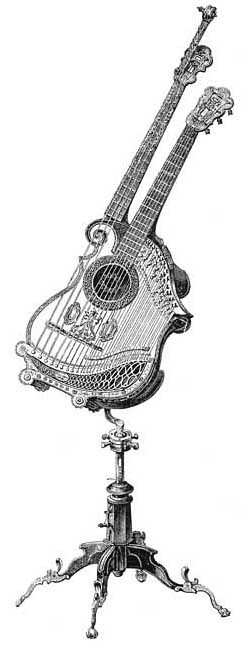
We’ve all seen the image, and vaguely understood (if only unconsciously) that it was indeed and in fact a real “flesh and blood” instrument. But if so, where did it disappear to?!
Apparently, it was hiding in plain sight for some years in a Madrid music shop, whether on display or hidden away, I have no idea. Upon the death of the store’s owner, it was briefly offered for sale (you don’t even want to know) by the widow, then subsequently stored in her home, while the family hashes out who the rightful owner is or should be (the answer is obvious…me!).
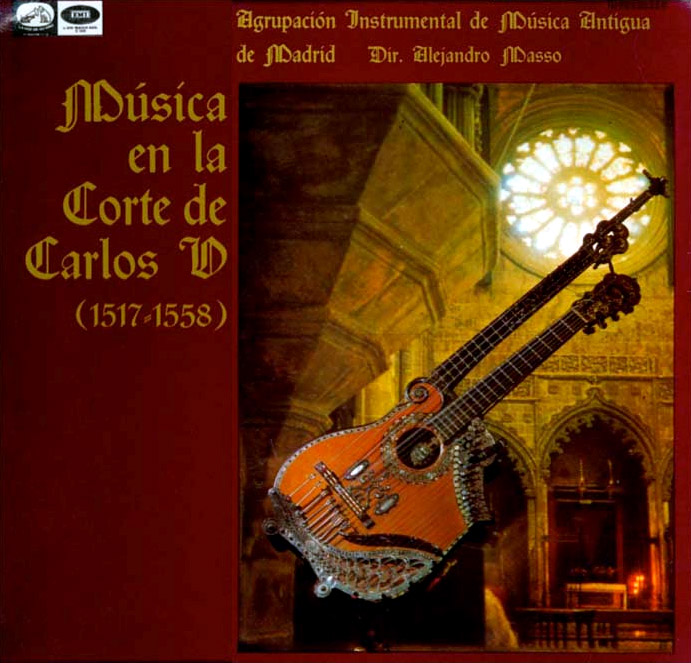
But seriously, the matter seems to be private, and so far not resolvable, and I’m not at liberty to disclose details, nor my Madrid source. He was able to supply a photo of the surviving instrument, as it comes from a surprising source – an old LP cover! It is unrelated to the music inside, but someone with access to the instrument obviously recognized great album cover “bait” when they saw it!
We have been unable to obtain any additional photos of it, and I can only hope such occurs before it is “lost to time” again.
Some history of it has been roughly translated and paraphrased for me:
The instrument was commissioned from Gallegos by the Duke de Montpensier as a special guitar for his wife about 1846. Gallegos took a full four years and two thousand duros in expense to complete it. Upon finishing it in 1850 in Malaga, a port city in Andalusia, Gallegos took the now-christened “guitarpa” to Seville to demonstrate it for the Duke. Unfortunately, some sort of “inopportune circumstances” caused the Duke to refuse to receive or even see the instrument, demanding four thousand duros instead (perhaps he had invested the original two thousand…I’m unclear).
Receiving aid from contacts in Madrid, he was given letters of introduction to several influential people in London. There, he played his guitarpa twice for Queen Victoria and gave several successful public concerts. Here, the instrument was featured in the 1851 London Great Exhibition, where it won the medal of the Council of S.M.B, and the praise of Queen Victoria and her husband.
These successes gave Gallegos the means to move to New York, where he again performed successfully on the guitarpa. No further details of his subsequent whereabouts, or how the instrument ended up a century and a half later in a music store in Madrid, are known.
Few details were written about the instrument beyond the expected hyperbole. It had 40 strings, a body of rosewood and a soundboard covered in tercipelo (?). The “harp” part of the instrument (for our organological purposes) is the bank of treble strings, presumably tuned to a diatonic scale. It has a normal guitar neck, while the second neck contains 3 fully-fretted strings (on the extension as well) said to be cello strings (or tuned like a cello).
I have heard that, while it looks stunning in the photo, and is in very good condition, it would take a significant amount of work to make playable.
More than anything, its claim to fame was the engraving done at the 1851 Exhibition, which was reproduced for all posterity by several sources, including Dover Books, as a popular public domain image of a fantastical musical instrument. Paul Hostetter used it for his website graphic (undoubtedly others have “borrowed” it as well), and of course, I chose it as the ultimate iconic image for the History section of Harpguitars.net.
I’ve managed to become (very slightly less) obsessive over the years – enough so that the thought of this harp guitar holy grail standing unseen in a darkened room, untouched, unloved, un-obsessed over, does not keep me up nights.
Still…a story that needs an ending.

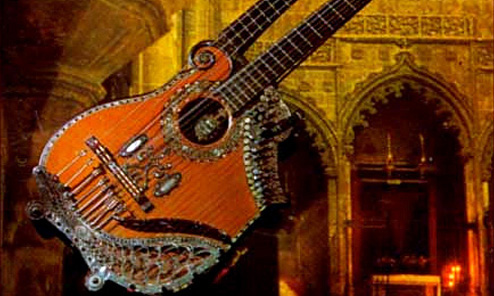
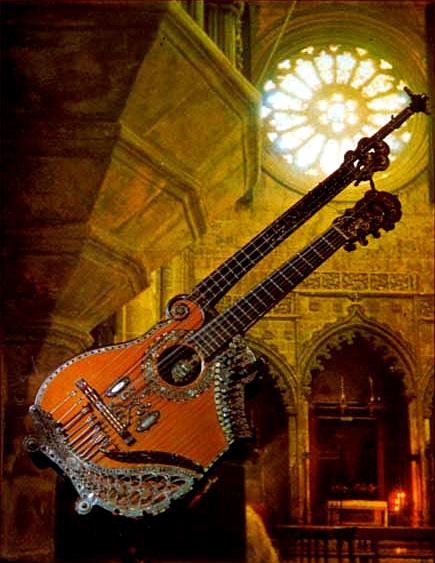
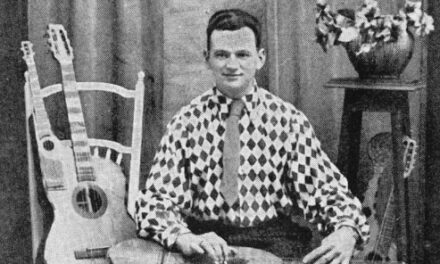
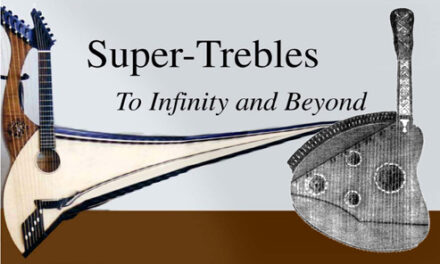
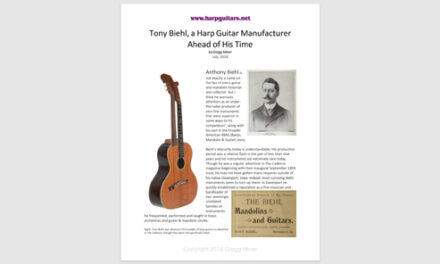
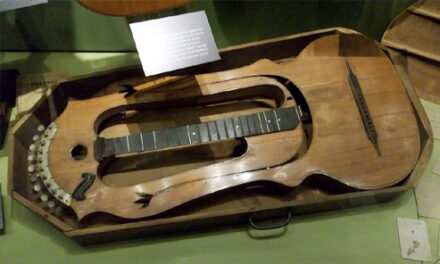
Oh, well, true is that Ben most likely beat me. But being a luthier he hesitated two hours or more until he finally hit “Submit Comment”. Such a beautiful instrument cluelessly clad in cloth? That can’t be true! (And I know why the Duke rejected it …)
While I just thought: “Velvet? Yeah, that SOUNDS cool!”–and submitted. 🙂
Thanks, Ben – but Burkhard beat you to it.
I know – that’s what I also got with Google Translate, but didn’t quite believe it (not much more practical than Translate’s other option of “fer-de-lance”…a guitar covered with deadly snakes?….anyway, see tonight’s blog…).
tercipelo: velvet…
(Thanks Ben you are a Genious!)
“A soundboard covered in terci(o)pelo”?
Terciopelo would be velvet. A nice pickguard, albeit damping I’d say!
I was seriously pondering building a recreation of this instrument.